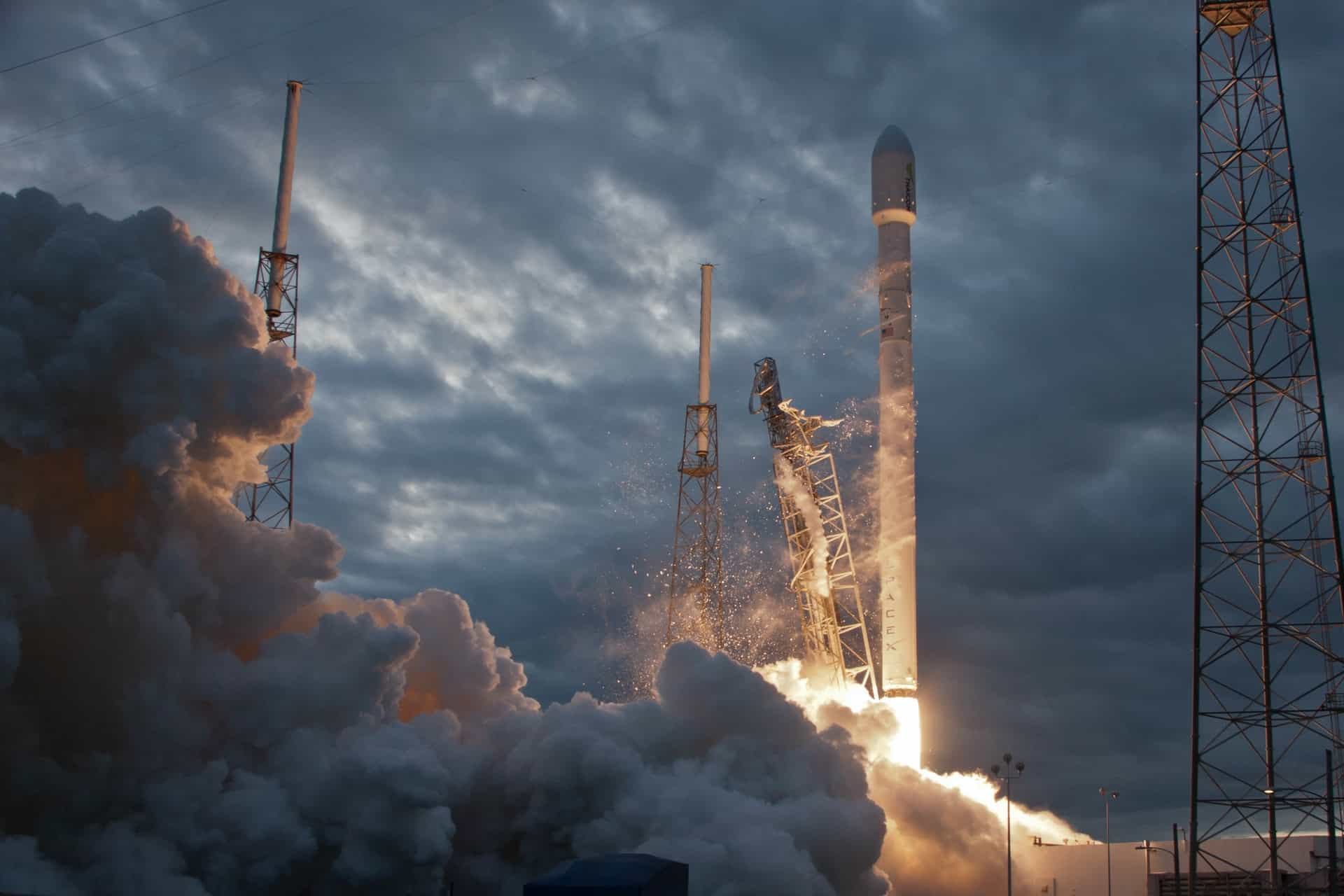Man’s quest to figure out how to conquer the vast wilderness of space has yielded a multitude of new horizons, literally and metaphorically. Whether via NASA, or the rising space exploration corporations, our march towards the cosmos has ramped up a few notches…and we couldn’t be more excited. However, will our mission to discover and inhabit new worlds come at the expense of our current one?
Space exploration, at its current operational levels, has an extremely minuscule overall impact on the environment. However, most conventional rocket launches have extremely high levels of fuel waste, debris, and gases that are harmful to the environment.
In the last few years, environmental watchdogs have had their ears perked at the major players in the modern-day space race, attentively seeking any hint of corner-cutting where “going green” is concerned. At the present day, some may think such concern is a bit overblown, but a safety-first approach is never a bad idea.
10. Carbon emissions
The super-spectacular explosions we all love to countdown to come at a steep cost, I’m afraid. Of course, that is in most cases. At present, kerosene is the industry standard for space exploration and satellite launches.
Some quick math for you: kerosene has a carbon density of 3 kilograms per 1 kilogram of kerosene. For context, SpaceX’s Falcon 9 rocket requires 155 tonnes of kerosene to lift off the ground. This means that every launch produces a whopping 465 tonnes of carbon. Ludicrous, but not really a problem if it’s just a handful of launches.
Wait, there’s more. The Falcon 9 rocket’s fuel mix also has liquid oxygen mixed in with the kerosene. However, this oxygen must be produced by cryogenic processes in the rocket’s nine engines. This production of oxygen produces an additional 650 tonnes of carbon exhaust.
9. Debris
We, humans, are truly a funny bunch. Having grown tired of leaving our unwanted junk in forests, cities, and parks on Earth, we have now resorted to littering in and around our orbit.
Satellites, probes, shards from ruptured rocket stages, or the rocket stages themselves are steadily forming belts of debris along the outer atmosphere. These space junkyards are growing exponentially to the point of convergence. Space scientists at the University of California, Santa Barbara assert that there are over 100,000 pieces of man-made debris floating in orbit at present. Most of the items are tiny though, and of little consequence to the environment.
However, remember that this debris is a result of the somewhat restricted space exploration of the last half-century. The upcoming decades will see the rise of commercial, research-based, and military space voyages and even more satellite launches. 5G satellites will soon be a common sight in low-earth orbit too, and how we will manage them, and their environmental impact, remains to be seen.
8. Hydrochloric Acid
Solid booster rockets use oxidizers to produce the oxygen that facilitates combustion that provides thrust. This is necessary because this oxygen cools the kerosene it is mixed with. Most of these oxidizers make use of perchlorate ions, which will produce hydrochloric acid (HCL) as a by-product of the oxidizing process.
HCL is one of the most corrosive acids we know, so letting it loose in the environment willy-nilly is a big problem. It can also dissolve in water, which means that significant deposits into rivers and lakes could lower the water’s overall pH. This would make the water body more acidic and potentially harmful to any aquatic life in the water body.
NASA researchers at the Kennedy Space Center found that HCL had a significant negative impact on the plant life surrounding the facility’s launch sites.
7. Re-entry space particles
This is a direct side-effect of the aforementioned space debris. A lot of debris that is still within the pulling power of the planet’s gravity begins re-entry into the atmosphere and falls towards the surface. However, the speed at which these objects travel causes severe friction in the air, leading to intense heating. This heating leads to the vaporization of the objects into dust particles. At least half of all space debris meets this fiery fate.
Of course, we must remember that some of these items are made from complex chemical compounds and metal alloys. We do not yet have a clear understanding of how some of these chemicals react in the atmosphere, or how they interact with life.
6. Land use pattern changes
Over time, as a result of falling chemicals like hydrochloric acid and others, which we touched on before, soils can be affected and changed. Depending on the pre-existing nature of the soil and the reactive agent it is exposed to, these changes can demand a repurposing of the land, or an abandonment of the land entirely. Such acids can have a neutralizing effect on farmland soils, which forces farmers to switch crops or move. Acids can also leech into the groundwater supply and end up affecting human and animal water supplies. For cattle ranchers, for example, the acidification of nearby rivers may force a relocation, especially if they lease the ranches.
5. Cultural eutrophication
Eutrophication is when a water body’s nutrient content rises to a point that facilitates excessive algae growth. This is bad because when algae decompose, the bacteria that are produced using up a large amount of oxygen in the water. This affects fish, aquatic plants, as well as humans and animals within the water body’s sphere of influence.
Cultural eutrophication is when the nutrient enrichment phase of the cycle occurs as a direct result of human activities…such a launching rockets to Mars.
A 2014 NASA study focused on the ecological impacts of the Space Shuttle Program at John F. Kennedy Space Center in Florida, strongly indicated that there is direct causation between NASA space launches and eutrophication of nearby water bodies.
4. Environmental remediation
Not all space-related environmental impacts are negative. The space exploration industry, especially NASA, has been advocating for and pioneering, many environmental remediation attempts.
Now, “environmental remediation” is just an overly complicated way of saying “cleaning up our messes”. It is, essentially, when pollutants and other environmentally harmful factors are removed or neutralized to help restore a certain ecosystem to its natural state.
NASA themselves credit their remediation efforts as one of the main inspirations for subsequent corporate socio-environmental responsibility that is now standard in many industrial areas. NASA addressed, and continues to address, any past contamination sites near and around the Kennedy Space Center.
3. Hazard waste management system implementation
Hazard waste management systems are mechanisms, tools, and procedures that are used in concert to safely, and sustainably, manage and dispose of hazardous waste.
“Hazardous waste” is divided into four categories: ignitibility (flammable), corrosivity, reactivity, or toxicity. Such waste cannot simply be thrown in with the rest of your everyday trash. Some items need protective clothing for them to be handled safely. Some waste is so dangerous that it can only be handled by machinery or drones.
NASA is renowned for its waste management engineering feats, in both space exploration and environmentalism here on Earth. Man would not have been able to reach the moon with clean trousers were it not for the innovative Apollo waste management system, for example.
Nowadays, NASA makes various environmentally conscious efforts, with new sustainability agendas always in the pipeline. One of the space administrator’s central efforts is the Recycling & Sustainable Acquisition. This is a set of guiding protocols that encourages the purchase of recyclable materials, as well as environmentally safe ways to dispose of waste.
2. Clean energy
NASA has long been a major player in bringing alternative energy sources to the mainstream. From their swift and decisive role in the combat against the energy crises of the 70s. They were directly responsible for the introduction of wind, solar, thermal reactor, and battery technologies in the late 20th century.
In the 21st century, NASA is pushing boundaries in the fields of geothermal power, magnetic levitation, thermoelectrics, and much more. Many corporations, both within and without the space science field, are already following suit as well. In the long run, this can only be a good thing for our beloved environment.
1. Global prediction, monitoring, and response
Thanks to the efforts of NASA over the last few decades, we are now able to map (with a high degree of accuracy) how the world’s environment will change over the next few years or seasons. This technological marvel is the (still experimental) Earth Science program, which has been in the making for about 20 years. A disciplined approach to measuring the Earth’s recent past serves as the basis for the prediction of medium to long-term environmental trends.
Using this system, we can view the globe in terms of its land climes, oceans, and ecosystems in real-time. This is a virtual Earth that can be manipulated with different simulated factors, so we can see the environmental consequences before we introduce such factors to the real world. If factors such as an increased number of annual space launches, for example, are applied to the virtual Earth in the Earth Science program, we would develop a clearer understanding of how they affect the environment.
In turn, knowledge of how certain factors could affect the environment also helps to boost preparedness. The time that would otherwise be dedicated to diagnosing problems is saved as well because everything that could go wrong is known in advance.

